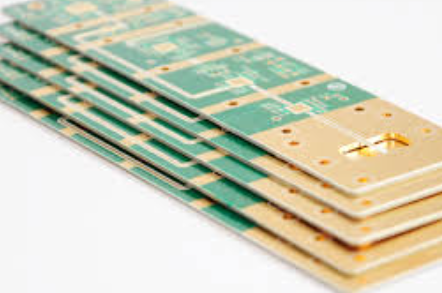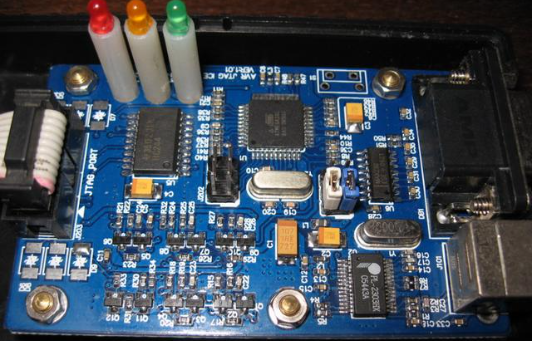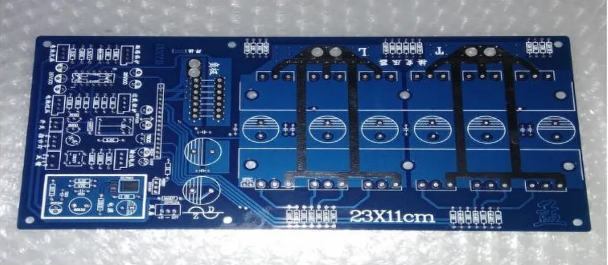Metal core pcb technology
Advantages Of Metal Core PCB Technology In High-Power Applications
Metal Core Printed Circuit Board (MCPCB) technology has emerged as a pivotal innovation in the realm of high-power applications, offering a multitude of advantages that cater to the demanding requirements of modern electronic devices.
One of the primary benefits of MCPCB technology is its superior thermal management capabilities.
Traditional PCBs, typically made from materials like FR4, often struggle to dissipate heat efficiently, leading to potential overheating and subsequent failure of electronic components. In contrast, MCPCBs incorporate a metal core, usually aluminum or copper, which significantly enhances thermal conductivity. This metal core acts as a heat sink, effectively drawing heat away from critical components and distributing it across the board, thereby maintaining optimal operating temperatures and ensuring the longevity and reliability of the device.
Furthermore, the enhanced thermal performance of MCPCBs translates into improved overall efficiency of high-power applications.
By maintaining lower temperatures, these boards reduce the thermal stress on components, which can otherwise lead to performance degradation over time. This is particularly crucial in applications such as LED lighting, power supplies, and automotive electronics, where consistent performance and reliability are paramount. Additionally, the ability to manage heat more effectively allows for higher power densities, enabling designers to create more compact and powerful devices without compromising on performance or safety.
Another significant advantage of MCPCB technology is its mechanical stability.
The metal core provides a robust foundation that enhances the structural integrity of the PCB, making it more resistant to mechanical stresses such as bending and vibration. This is especially beneficial in high-power applications that are often subjected to harsh operating conditions, such as industrial machinery and aerospace systems. The increased durability of MCPCBs ensures that they can withstand these challenging environments, thereby reducing the risk of mechanical failure and extending the operational lifespan of the device.
In addition to thermal and mechanical benefits, MCPCBs also offer improved electrical performance.
The metal core can serve as a ground plane, which helps to reduce electromagnetic interference (EMI) and improve signal integrity. This is particularly advantageous in high-frequency applications where maintaining signal clarity is critical. By minimizing EMI, MCPCBs contribute to the overall reliability and performance of electronic systems, ensuring that they operate smoothly and efficiently.
Moreover, the versatility of MCPCB technology allows for a wide range of design possibilities.
The metal core can be customized to suit specific application requirements, providing designers with the flexibility to optimize the PCB layout for both thermal and electrical performance. This adaptability makes MCPCBs an ideal choice for a diverse array of high-power applications, from consumer electronics to industrial automation.
In conclusion, the advantages of Metal Core PCB technology in high-power applications are manifold. The superior thermal management capabilities, coupled with enhanced mechanical stability and improved electrical performance, make MCPCBs a highly effective solution for modern electronic devices. As the demand for more powerful and reliable electronic systems continues to grow, the adoption of MCPCB technology is likely to become increasingly prevalent, driving further advancements in high-power applications and contributing to the ongoing evolution of the electronics industry.
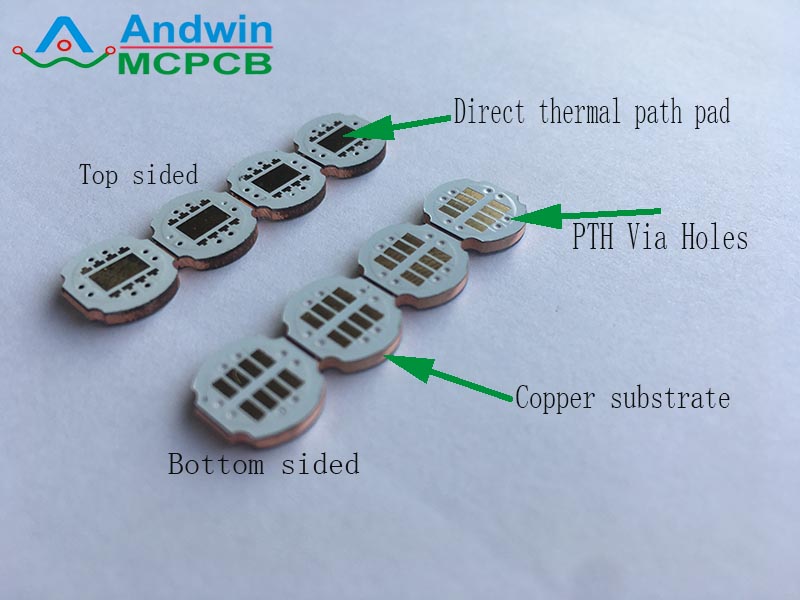
Thermal Management Solutions Using Metal Core PCBs
Metal core printed circuit boards (PCBs) have emerged as a pivotal technology in the realm of thermal management solutions, addressing the growing need for efficient heat dissipation in electronic devices. As electronic components become increasingly powerful and compact, the challenge of managing the heat they generate has intensified. Metal core PCBs, often abbreviated as MCPCBs, offer a robust solution to this problem by incorporating a metal substrate, typically aluminum or copper, which significantly enhances thermal conductivity.
The primary advantage of metal core PCBs lies in their ability to efficiently transfer heat away from critical components
thereby maintaining optimal operating temperatures and ensuring the longevity and reliability of the device. Unlike traditional PCBs, which use fiberglass or other non-metallic materials as the substrate, MCPCBs leverage the superior thermal properties of metals. This results in a substantial reduction in thermal resistance, allowing heat to be dissipated more effectively.
In addition to their thermal management capabilities, metal core PCBs also exhibit excellent mechanical strength and durability.
The metal substrate provides a sturdy foundation that can withstand the rigors of high-power applications, making MCPCBs ideal for use in industries such as automotive, aerospace, and LED lighting. For instance, in automotive applications, where electronic systems are exposed to harsh environments and high temperatures, the robustness of metal core PCBs ensures reliable performance and longevity.
Furthermore, the integration of metal core PCBs into LED lighting systems has revolutionized the industry by enabling the development of high-brightness LEDs with extended lifespans. LEDs generate a significant amount of heat, which, if not managed properly, can lead to reduced efficiency and premature failure. By utilizing MCPCBs, manufacturers can effectively dissipate this heat, thereby enhancing the performance and durability of LED products.
Moreover, the design flexibility offered by metal core PCBs is another noteworthy benefit.
Engineers can tailor the thickness and composition of the metal core to meet specific thermal and mechanical requirements, allowing for customized solutions that address the unique challenges of different applications. This adaptability is particularly valuable in the development of high-performance electronic devices, where precise thermal management is crucial.
Despite their numerous advantages, the implementation of metal core PCBs does present certain challenges.
The manufacturing process for MCPCBs is more complex and costly compared to traditional PCBs, primarily due to the additional steps involved in handling and processing the metal substrate. However, the long-term benefits of improved thermal management and enhanced device reliability often outweigh these initial costs, making MCPCBs a worthwhile investment for many applications.
In conclusion, metal core PCB technology represents a significant advancement in thermal management solutions, offering superior heat dissipation, mechanical strength, and design flexibility. As electronic devices continue to evolve, the demand for efficient thermal management solutions will only increase, further solidifying the importance of MCPCBs in the industry. By addressing the critical issue of heat dissipation, metal core PCBs not only enhance the performance and reliability of electronic devices but also pave the way for future innovations in high-power and high-performance applications.
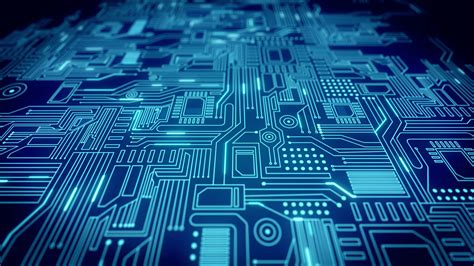
Design Considerations For Metal Core PCBs In LED Lighting
Metal core printed circuit boards (MCPCBs) have become increasingly significant in the realm of LED lighting due to their superior thermal management capabilities. As LED technology advances, the demand for efficient heat dissipation grows, making MCPCBs an essential component in the design and functionality of LED lighting systems. When designing MCPCBs for LED applications, several critical considerations must be taken into account to ensure optimal performance and longevity.
First and foremost, the choice of materials is paramount.
MCPCBs typically consist of a metal substrate, a dielectric layer, and a copper circuit layer. The metal substrate, often aluminum or copper, provides the necessary thermal conductivity to dissipate heat away from the LEDs. Aluminum is commonly preferred due to its balance of cost-effectiveness and thermal performance, whereas copper offers superior thermal conductivity but at a higher cost. The dielectric layer, which electrically isolates the metal substrate from the copper circuit, must possess high thermal conductivity and electrical insulation properties. This layer is crucial in maintaining the integrity of the circuit while facilitating efficient heat transfer.
In addition to material selection, the thickness of each layer plays a vital role in the overall performance of the MCPCB.
The metal substrate’s thickness must be sufficient to support the mechanical structure and thermal requirements of the application. However, an excessively thick substrate can lead to increased weight and potential difficulties in manufacturing. Similarly, the dielectric layer’s thickness must be optimized to ensure adequate insulation without compromising thermal conductivity. The copper circuit layer’s thickness should be chosen based on the current-carrying requirements of the LEDs, ensuring minimal resistance and efficient power delivery.
Thermal management is a critical aspect of MCPCB design for LED lighting.
Effective heat dissipation not only enhances the performance of the LEDs but also extends their lifespan. To achieve this, designers must consider the placement and density of the LEDs on the MCPCB. Uniform distribution of LEDs can prevent localized hotspots and ensure even heat spread across the board. Additionally, incorporating thermal vias—small holes filled with thermally conductive material—can further enhance heat transfer from the copper circuit layer to the metal substrate.
Electrical considerations are equally important in the design of MCPCBs for LED lighting.
The layout of the copper traces must be meticulously planned to minimize resistance and voltage drops, which can affect the brightness and efficiency of the LEDs. Proper spacing between traces is essential to prevent short circuits and ensure reliable operation. Furthermore, the design should account for potential electromagnetic interference (EMI) and implement measures such as grounding and shielding to mitigate its effects.
Manufacturability is another crucial factor in MCPCB design.
The chosen materials and design specifications must align with the capabilities of the manufacturing process to ensure cost-effective and high-quality production. This includes considerations such as the compatibility of materials with standard fabrication techniques, the ease of assembly, and the reliability of solder joints. Collaboration with experienced manufacturers during the design phase can help identify potential challenges and optimize the design for manufacturability.
In conclusion, designing metal core PCBs for LED lighting involves a comprehensive understanding of material properties, thermal management, electrical considerations, and manufacturability. By carefully selecting materials, optimizing layer thicknesses, ensuring effective heat dissipation, and planning the electrical layout, designers can create MCPCBs that enhance the performance and longevity of LED lighting systems. As LED technology continues to evolve, the importance of well-designed MCPCBs will only grow, underscoring the need for meticulous design practices in this critical area.
Comparing Metal Core PCBs To Traditional FR4 PCBs
Metal Core Printed Circuit Boards (MCPCBs) have emerged as a significant advancement in the field of electronics, offering distinct advantages over traditional FR4 PCBs. To understand the comparative benefits and applications of these two types of PCBs, it is essential to delve into their structural differences, thermal management capabilities, and overall performance in various environments.
Traditional FR4 PCBs are constructed using a woven glass-reinforced epoxy laminate material, which provides a good balance of mechanical strength, electrical insulation, and cost-effectiveness. However, one of the primary limitations of FR4 PCBs is their thermal conductivity. The epoxy resin used in FR4 has relatively low thermal conductivity, which can lead to heat accumulation in high-power applications. This heat buildup can adversely affect the performance and longevity of electronic components, necessitating additional cooling mechanisms such as heat sinks or fans.
In contrast, Metal Core PCBs incorporate a metal substrate, typically aluminum or copper, which significantly enhances their thermal conductivity.
The metal core acts as a heat spreader, efficiently dissipating heat away from critical components. This inherent thermal management capability makes MCPCBs particularly suitable for high-power applications, such as LED lighting, power supplies, and automotive electronics, where efficient heat dissipation is crucial for maintaining performance and reliability.
Moreover, the superior thermal performance of MCPCBs allows for higher power densities and more compact designs. This is particularly advantageous in modern electronic devices, which are continually shrinking in size while increasing in functionality. By effectively managing heat, MCPCBs enable designers to pack more components into a smaller space without compromising on performance or risking thermal damage.
Another aspect to consider is the mechanical robustness of MCPCBs compared to FR4 PCBs.
The metal core provides additional structural integrity, making MCPCBs more resistant to mechanical stress and vibration. This characteristic is particularly beneficial in applications subjected to harsh environmental conditions, such as automotive and industrial electronics, where durability and reliability are paramount.
However, it is important to note that MCPCBs are generally more expensive than their FR4 counterparts. The cost of materials, as well as the specialized manufacturing processes required for MCPCBs, contribute to this price difference. Consequently, the decision to use MCPCBs over FR4 PCBs often hinges on a cost-benefit analysis, taking into account the specific thermal and mechanical requirements of the application.
In terms of electrical performance, both MCPCBs and FR4 PCBs can be designed to meet a wide range of specifications.
However, the choice of substrate material can influence factors such as signal integrity and dielectric properties. While FR4 materials are well-suited for a broad spectrum of applications due to their balanced electrical characteristics, MCPCBs may offer advantages in scenarios where thermal management is a critical concern.
In conclusion, the choice between Metal Core PCBs and traditional FR4 PCBs depends on various factors, including thermal management needs, mechanical robustness, cost considerations, and specific application requirements. MCPCBs offer superior thermal conductivity and structural integrity, making them ideal for high-power and high-reliability applications. On the other hand, FR4 PCBs provide a cost-effective solution for a wide range of standard electronic applications. By carefully evaluating the unique demands of each project, designers can select the most appropriate PCB technology to ensure optimal performance and longevity of their electronic devices.Advantages Of Metal Core PCB Technology In High-Power Applications
Metal Core Printed Circuit Board (MCPCB) technology has emerged as a pivotal innovation in the realm of high-power applications, offering a multitude of advantages that cater to the demanding requirements of modern electronic devices.
One of the primary benefits of MCPCB technology is its superior thermal management capabilities.
Traditional PCBs, typically made from materials like FR4, often struggle to dissipate heat efficiently, leading to potential overheating and subsequent failure of electronic components. In contrast, MCPCBs incorporate a metal core, usually aluminum or copper, which significantly enhances thermal conductivity. This metal core acts as a heat sink, effectively drawing heat away from critical components and distributing it across the board, thereby maintaining optimal operating temperatures and ensuring the longevity and reliability of the device.
Furthermore, the enhanced thermal performance of MCPCBs translates into improved overall efficiency of high-power applications.
By maintaining lower temperatures, these boards reduce the thermal stress on components, which can otherwise lead to performance degradation over time. This is particularly crucial in applications such as LED lighting, power supplies, and automotive electronics, where consistent performance and reliability are paramount. Additionally, the ability to manage heat more effectively allows for higher power densities, enabling designers to create more compact and powerful devices without compromising on performance or safety.
Another significant advantage of MCPCB technology is its mechanical stability.
The metal core provides a robust foundation that enhances the structural integrity of the PCB, making it more resistant to mechanical stresses such as bending and vibration. This is especially beneficial in high-power applications that are often subjected to harsh operating conditions, such as industrial machinery and aerospace systems. The increased durability of MCPCBs ensures that they can withstand these challenging environments, thereby reducing the risk of mechanical failure and extending the operational lifespan of the device.
In addition to thermal and mechanical benefits, MCPCBs also offer improved electrical performance.
The metal core can serve as a ground plane, which helps to reduce electromagnetic interference (EMI) and improve signal integrity. This is particularly advantageous in high-frequency applications where maintaining signal clarity is critical. By minimizing EMI, MCPCBs contribute to the overall reliability and performance of electronic systems, ensuring that they operate smoothly and efficiently.
Moreover, the versatility of MCPCB technology allows for a wide range of design possibilities.
The metal core can be customized to suit specific application requirements, providing designers with the flexibility to optimize the PCB layout for both thermal and electrical performance. This adaptability makes MCPCBs an ideal choice for a diverse array of high-power applications, from consumer electronics to industrial automation.
In conclusion, the advantages of Metal Core PCB technology in high-power applications are manifold. The superior thermal management capabilities, coupled with enhanced mechanical stability and improved electrical performance, make MCPCBs a highly effective solution for modern electronic devices. As the demand for more powerful and reliable electronic systems continues to grow, the adoption of MCPCB technology is likely to become increasingly prevalent, driving further advancements in high-power applications and contributing to the ongoing evolution of the electronics industry.
Thermal Management Solutions Using Metal Core PCBs
Metal core printed circuit boards (PCBs) have emerged as a pivotal technology in the realm of thermal management solutions, addressing the growing need for efficient heat dissipation in electronic devices. As electronic components become increasingly powerful and compact, the challenge of managing the heat they generate has intensified. Metal core PCBs, often abbreviated as MCPCBs, offer a robust solution to this problem by incorporating a metal substrate, typically aluminum or copper, which significantly enhances thermal conductivity.
The primary advantage of metal core PCBs lies in their ability to efficiently transfer heat away from critical components, thereby maintaining optimal operating temperatures and ensuring the longevity and reliability of the device. Unlike traditional PCBs, which use fiberglass or other non-metallic materials as the substrate, MCPCBs leverage the superior thermal properties of metals. This results in a substantial reduction in thermal resistance, allowing heat to be dissipated more effectively.
In addition to their thermal management capabilities, metal core PCBs also exhibit excellent mechanical strength and durability.
The metal substrate provides a sturdy foundation that can withstand the rigors of high-power applications, making MCPCBs ideal for use in industries such as automotive, aerospace, and LED lighting. For instance, in automotive applications, where electronic systems are exposed to harsh environments and high temperatures, the robustness of metal core PCBs ensures reliable performance and longevity.
Furthermore, the integration of metal core PCBs into LED lighting systems has revolutionized the industry by enabling the development of high-brightness LEDs with extended lifespans. LEDs generate a significant amount of heat, which, if not managed properly, can lead to reduced efficiency and premature failure. By utilizing MCPCBs, manufacturers can effectively dissipate this heat, thereby enhancing the performance and durability of LED products.
Moreover, the design flexibility offered by metal core PCBs is another noteworthy benefit.
Engineers can tailor the thickness and composition of the metal core to meet specific thermal and mechanical requirements, allowing for customized solutions that address the unique challenges of different applications. This adaptability is particularly valuable in the development of high-performance electronic devices, where precise thermal management is crucial.
Despite their numerous advantages, the implementation of metal core PCBs does present certain challenges.
The manufacturing process for MCPCBs is more complex and costly compared to traditional PCBs, primarily due to the additional steps involved in handling and processing the metal substrate. However, the long-term benefits of improved thermal management and enhanced device reliability often outweigh these initial costs, making MCPCBs a worthwhile investment for many applications.
In conclusion, metal core PCB technology represents a significant advancement in thermal management solutions, offering superior heat dissipation, mechanical strength, and design flexibility. As electronic devices continue to evolve, the demand for efficient thermal management solutions will only increase, further solidifying the importance of MCPCBs in the industry. By addressing the critical issue of heat dissipation, metal core PCBs not only enhance the performance and reliability of electronic devices but also pave the way for future innovations in high-power and high-performance applications.
Design Considerations For Metal Core PCBs In LED Lighting
Metal core printed circuit boards (MCPCBs) have become increasingly significant in the realm of LED lighting due to their superior thermal management capabilities. As LED technology advances, the demand for efficient heat dissipation grows, making MCPCBs an essential component in the design and functionality of LED lighting systems. When designing MCPCBs for LED applications, several critical considerations must be taken into account to ensure optimal performance and longevity.
First and foremost, the choice of materials is paramount.
MCPCBs typically consist of a metal substrate, a dielectric layer, and a copper circuit layer. The metal substrate, often aluminum or copper, provides the necessary thermal conductivity to dissipate heat away from the LEDs. Aluminum is commonly preferred due to its balance of cost-effectiveness and thermal performance, whereas copper offers superior thermal conductivity but at a higher cost. The dielectric layer, which electrically isolates the metal substrate from the copper circuit, must possess high thermal conductivity and electrical insulation properties. This layer is crucial in maintaining the integrity of the circuit while facilitating efficient heat transfer.
In addition to material selection, the thickness of each layer plays a vital role in the overall performance of the MCPCB.
The metal substrate’s thickness must be sufficient to support the mechanical structure and thermal requirements of the application. However, an excessively thick substrate can lead to increased weight and potential difficulties in manufacturing. Similarly, the dielectric layer’s thickness must be optimized to ensure adequate insulation without compromising thermal conductivity. The copper circuit layer’s thickness should be chosen based on the current-carrying requirements of the LEDs, ensuring minimal resistance and efficient power delivery.
Thermal management is a critical aspect of MCPCB design for LED lighting.
Effective heat dissipation not only enhances the performance of the LEDs but also extends their lifespan. To achieve this, designers must consider the placement and density of the LEDs on the MCPCB. Uniform distribution of LEDs can prevent localized hotspots and ensure even heat spread across the board. Additionally, incorporating thermal vias—small holes filled with thermally conductive material—can further enhance heat transfer from the copper circuit layer to the metal substrate.
Electrical considerations are equally important in the design of MCPCBs for LED lighting.
The layout of the copper traces must be meticulously planned to minimize resistance and voltage drops, which can affect the brightness and efficiency of the LEDs. Proper spacing between traces is essential to prevent short circuits and ensure reliable operation. Furthermore, the design should account for potential electromagnetic interference (EMI) and implement measures such as grounding and shielding to mitigate its effects.
Manufacturability is another crucial factor in MCPCB design.
The chosen materials and design specifications must align with the capabilities of the manufacturing process to ensure cost-effective and high-quality production. This includes considerations such as the compatibility of materials with standard fabrication techniques, the ease of assembly, and the reliability of solder joints. Collaboration with experienced manufacturers during the design phase can help identify potential challenges and optimize the design for manufacturability.
In conclusion, designing metal core PCBs for LED lighting involves a comprehensive understanding of material properties, thermal management, electrical considerations, and manufacturability. By carefully selecting materials, optimizing layer thicknesses, ensuring effective heat dissipation, and planning the electrical layout, designers can create MCPCBs that enhance the performance and longevity of LED lighting systems. As LED technology continues to evolve, the importance of well-designed MCPCBs will only grow, underscoring the need for meticulous design practices in this critical area.
Comparing Metal Core PCBs To Traditional FR4 PCBs
Metal Core Printed Circuit Boards (MCPCBs) have emerged as a significant advancement in the field of electronics, offering distinct advantages over traditional FR4 PCBs. To understand the comparative benefits and applications of these two types of PCBs, it is essential to delve into their structural differences, thermal management capabilities, and overall performance in various environments.
Traditional FR4 PCBs are constructed using a woven glass-reinforced epoxy laminate material, which provides a good balance of mechanical strength, electrical insulation, and cost-effectiveness.
However, one of the primary limitations of FR4 PCBs is their thermal conductivity. The epoxy resin used in FR4 has relatively low thermal conductivity, which can lead to heat accumulation in high-power applications. This heat buildup can adversely affect the performance and longevity of electronic components, necessitating additional cooling mechanisms such as heat sinks or fans.
In contrast, Metal Core PCBs incorporate a metal substrate, typically aluminum or copper, which significantly enhances their thermal conductivity. The metal core acts as a heat spreader, efficiently dissipating heat away from critical components.
This inherent thermal management capability makes MCPCBs particularly suitable for high-power applications, such as LED lighting, power supplies, and automotive electronics, where efficient heat dissipation is crucial for maintaining performance and reliability.
Moreover, the superior thermal performance of MCPCBs allows for higher power densities and more compact designs. This is particularly advantageous in modern electronic devices, which are continually shrinking in size while increasing in functionality. By effectively managing heat, MCPCBs enable designers to pack more components into a smaller space without compromising on performance or risking thermal damage.
Another aspect to consider is the mechanical robustness of MCPCBs compared to FR4 PCBs.
The metal core provides additional structural integrity, making MCPCBs more resistant to mechanical stress and vibration. This characteristic is particularly beneficial in applications subjected to harsh environmental conditions, such as automotive and industrial electronics, where durability and reliability are paramount.
However, it is important to note that MCPCBs are generally more expensive than their FR4 counterparts.
The cost of materials, as well as the specialized manufacturing processes required for MCPCBs, contribute to this price difference. Consequently, the decision to use MCPCBs over FR4 PCBs often hinges on a cost-benefit analysis, taking into account the specific thermal and mechanical requirements of the application.
In terms of electrical performance, both MCPCBs and FR4 PCBs can be designed to meet a wide range of specifications. However, the choice of substrate material can influence factors such as signal integrity and dielectric properties. While FR4 materials are well-suited for a broad spectrum of applications due to their balanced electrical characteristics, MCPCBs may offer advantages in scenarios where thermal management is a critical concern.
In conclusion, the choice between Metal Core PCBs and traditional FR4 PCBs depends on various factors, including thermal management needs, mechanical robustness, cost considerations, and specific application requirements. MCPCBs offer superior thermal conductivity and structural integrity, making them ideal for high-power and high-reliability applications. On the other hand, FR4 PCBs provide a cost-effective solution for a wide range of standard electronic applications. By carefully evaluating the unique demands of each project, designers can select the most appropriate PCB technology to ensure optimal performance and longevity of their electronic devices.

